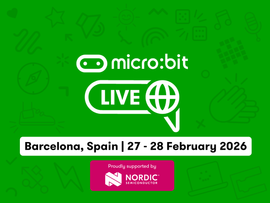5 subject areas where micro:bits enhance outdoor learning
The micro:bit is designed to be unplugged from a screen and used wherever children are learning, in any type of environment, including the great outdoors.
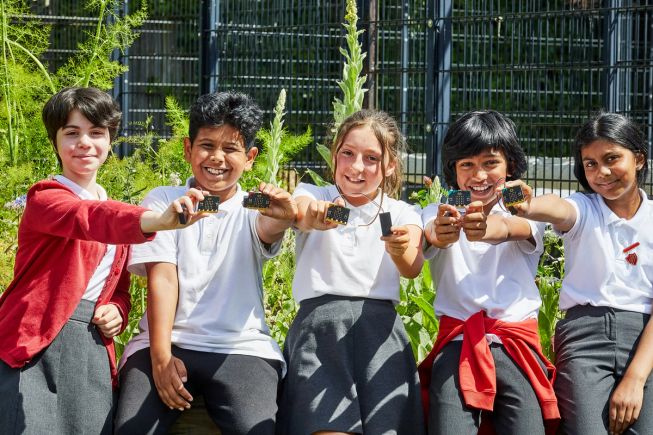
The benefits of outdoor learning have been researched for many years, with studies agreeing that it improves educational outcomes for all. Technology may traditionally be used indoors, but take it outside and you can uncover a world of practical, real-life experiences for students.
With a micro:bit, children can put code onto the device and take it away with them, enabling them to explore their environment using a tool they coded themselves.

The micro:bit and its battery pack are lightweight and durable, designed for educational use and the rough and tumble of school life. They fit in the palm of a child’s hand, and the cardboard or printable battery pack holders make them even more compact and easy to hold.
Some top tips to help squeeze in outdoor learning with the micro:bit as often as possible include:
- having waterproof containers
- using covered playground areas and
- being flexible with the timetable when the sun shines
Teachers from all over the world have shared how they use micro:bits outdoors. Here, we have collated 5 subject areas where micro:bits are ideal outdoor learning companions.

Boost wellbeing by coding the following projects, transferring the code onto micro:bits and using them in the fresh air outdoors. Ready-made code is provided for all the Make it: code it projects if you want to get outside even quicker!
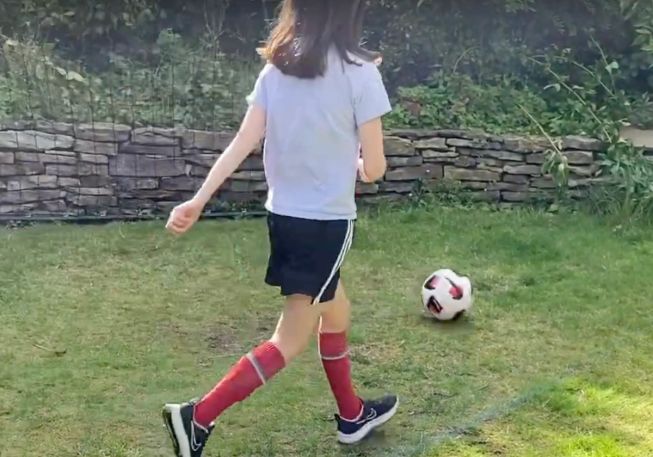
Use the kick strength data logger to add some sport to your micro:bit
Kick strength data logger
If your students enjoy ball games, then introduce them to the kick strength data logger project and bring data analysis into PE lessons or playground sports.
Calming LEDs
Use an animation sequence of Calming LEDs to help slow and regulate breathing, just like the students at Forgandenny primary school in Perth, Scotland.
Activity picker
Choose brain break activities or different sports when coding your activity picker. Students from Hopwood Primary, Lancashire, England got to choose which activities to code and do in their free time.
Stopwatch
Get into the Olympic spirit and code a stopwatch on a micro:bit to use in sports and games. Students at Duncanrig Secondary, Scotland were going for gold and combined the stopwatch and step counter projects in their outdoor learning!
Getting active unit of work
The Getting active series of 5 lessons is suitable for ages 7-11:
- lesson 1 includes a game that could be brought outdoors
- lesson 3 students code a step counter that can be tested outside
- lesson 5 students program an activity picker that can include outdoor activities

Motivate in maths by turning the outdoors into your space for investigations. That’s exactly what this class in Córdoba, Spain have done, working out the height of their school building. And Shoin Highschool in Osaka, Japan explored proportion and angles using their micro:bits.
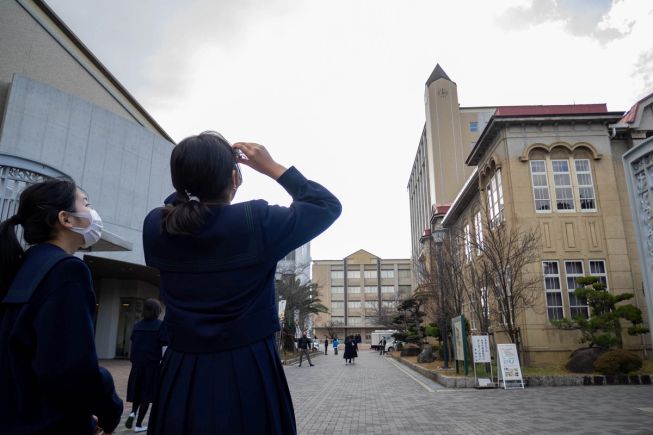
Students from Shoin Highschool in Osaka, Japan used the tilt sensor to measure angles
Distance calulator
The distance calculator project helps calculate how far you have walked and can be used to work out the area of outdoor spaces. Measure the length of your step and get the micro:bit to multiply this by the number of steps taken.
Step counter
Students in Toronto, Canada also used their step counter findings to investigate mean, median and mode.
Times tables tester
Make testing times tables good fun and good exercise - combine with star jumps for each incorrect answer or take a turn on play equipment if you get them all right!

Did you know you can use the BBC micro:bit V2 with built-in speaker as a data logger, recording data from its built-in sensors? Data is stored on your micro:bit even when its power source is disconnected. Outdoor data sources could incude the weather, like this class from St Andrews RC Primary in Gorebridge, Scotland. You can view this data in a table or line graph:
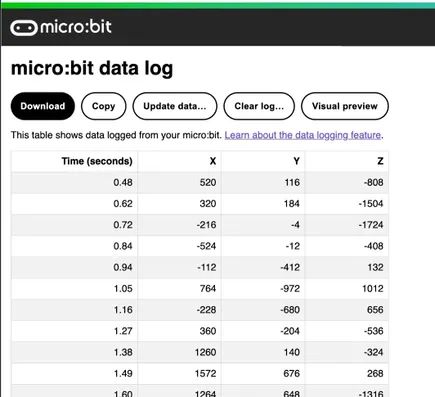
Environment exploration project
Your class could explore light, sound and temperature data in your environment using the environment exploration project.
Environment data logger project
Students could even explore the data logging feature of the micro:bit in the environment data logger project.
Nature art unit of work
Introduce a unit of work with outdoor fieldwork, like the nature walk at the beginning of this Nature art unit of work.
Seismic data idea
Or explore seismic data using the micro:bit like these students from Puerto Rico did as part of their their Science Fair project.

Pupils from Uno Academy in Añasco, Puerto Rico read the seismic signal on their micro:bits

Grade 4 students in Ontario, Canada collected sound and light data in their school environment, while P7 students in Hermitage Primary School in Scotland compared surface temperatures of different materials in their outdoor areas.

Hermitage Primary School in Scotland are using micro:bits to measure different surface temperatures, for the BBC micro:bit playground survey
Species counter
Use your BBC micro:bit to help you count two different species of plants or animals in your school playground, garden or local park.
Sunlight sensor & thermometer
Your micro:bit can help you find the brightest and warmest spots in your playground - ideal for growing plants. The sunlight sensor will detect light levels and the thermometer will allow you to compare temperatures.
Sound meter
Identify the best place for a quiet zone in the playground, or explore when traffic noise is at its highest/lowest with the sound meter project.

Global goals guides
Teachers and students in Akrata, Greece are working to become environmental stewards in a Protecting our seas programme using micro:bits on their local beach. If this inspires you to focus on environmental issues in your outdoor areas, then our Climate action, Life on land or Life below water global goals guides and the following projects may get ideas flowing in your classroom or outdoor areas.
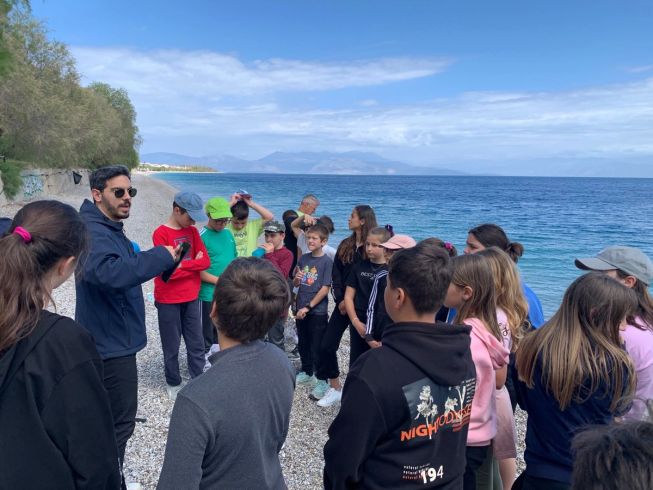
The 2nd Primary School at Akrata are using micro:bits to think about protecting seas, part of a Socialinnov project
Light up fishing nets
Use your micro:bit to create the Light up fishing nets project - a prototype of LED lights that can stop unwanted fish, turtles and birds from getting trapped in fishing nets.
Animal tracker
Help scientists track endangered animals and discover how they are being affected by climate change. Get students involved in testing the animal tracker project prototype through pretending to be endangered animals themselves.
Biodiversity counter code-along video
Help build back biodiversity in your local area through creating a biodiversity counter. Your class can code along to step-by-step instructions using our on demand video.
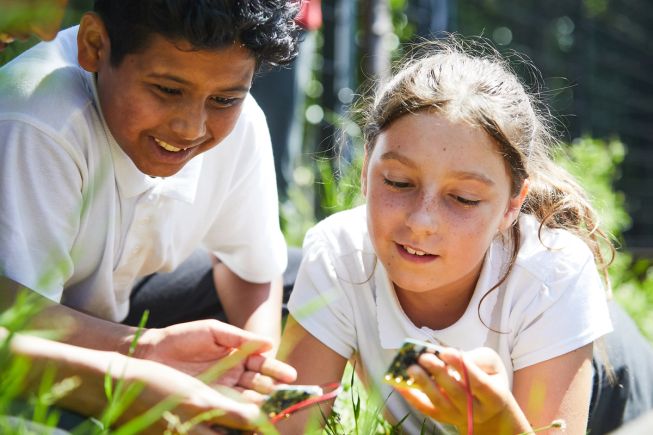
The examples above are only a small snapshot of the many creative ways teachers across the globe are combining digital skills with outdoor learning.
We would love to hear your experiences and see your pictures of micro:bits ‘in the wild’. Get in touch with us with your stories:


